The New Landscape of War
The battlefields of Ukraine have revealed a transformation unprecedented since the mechanized wars of the twentieth century. As Baluyevsky and Pukhov note in “Digital War – A New Reality” (Russia in Global Affairs, 2025), “the fog of war has almost entirely lifted.” Swarms of drones, networked sensors, and reconnaissance satellites have turned the front into an arena of persistent visibility. Every emission, heat signature, and vehicle movement risks instant detection and destruction. The authors call this a “zone of total annihilation,” extending dozens of kilometers behind the line of contact.
This new transparency upends the logic of mass. The “era of large battalions is over,” they write, and survivability now depends on dispersion, concealment, and electronic adaptation rather than numbers. The decisive contests are not between armies, but between networks: whose data flows faster, whose autonomous systems coordinate better, whose decision loops are more resilient under attack.
For elite infantry forces, this means a fundamental change in mission. Once used to break through enemy lines, elites are now required to survive, sense, and integrate. They act as low-signature human nodes that connect sensors, drones, and precision fires, exercising judgment when automation falters. The lesson of Ukraine is not that humans are obsolete, but that only the best-trained, most adaptive humans can endure in a battlespace dominated by machines. This article describes the nature of this military transformation.
More coordinated drone swarms. This is what 1000 hive mind drones looks like.
Now imagine them even smaller, faster, and completely controlled by AI.
Conventional warfare is over. pic.twitter.com/UbJd1pCWqM
— Green Beret Nap Time (@GBNT1952) February 13, 2025
From the Physical to the Cognitive Elite
For centuries, military elites were defined by their bodies. The hoplite, the knight, the ranger, and the commando were those who could fight and win when facing every hardship of the battlefield. They embodied endurance and physical courage. Intensive training strengthened the body and fortified the will to prevail in physical combat.
Spartan warrior
But the frontier of excellence has shifted. The modern battlefield’s limiting factor is not muscle but cognitive bandwidth: the ability to perceive patterns amid digital noise, integrate contradictory data streams, and decide faster than the enemy. Elite soldiers must navigate a continuous flood of sensor feeds, AI recommendations, and adversarial misinformation. In this environment, the mental discipline to remain calm, analytic, and responsible becomes the true mark of superiority.
Modern special Forces soldier
This does not diminish the physical dimension; it reframes it. The body becomes the support system for the mind: strong enough to endure stress and deprivation, yet trained above all to maintain clarity under overload. The future elite is the soldier who can think precisely in an information-saturated environment.
Automation and the Narrowing of the Human Military Domain
As autonomous and semi-autonomous systems proliferate, human combatants occupy an ever-narrower slice of the battlespace. Drones clear trenches; robotic mules carry supplies; machine-vision systems identify targets. Humans remain indispensable only where disambiguation, ethics, or improvisation are required. These are precisely the areas where elites will concentrate.
In this sense, the role of the elite becomes paradoxical: they operate in the smallest physical space but carry the heaviest moral and strategic weight. They are the last circuit breakers in a chain of machine decision-making. Their courage is not only physical but epistemic—the readiness to assume responsibility in uncertainty, to override automation when it conflicts with judgment. In digital war, courage means discernment.
Soldier with VR headset
The New Warrior Ethos
The traditional warrior ethos—valor, endurance, sacrifice—was born in a world where the decisive virtue was willingness to risk hardship and death. That remains, but it is joined by a new set of traits: broad intelligence, disciplined restraint, tenacity of purpose, and steadiness under “informational fire.” The modern elite must live with constant operational complexity and exposure to multiple data streams whose reliability is uncertain.
The definition of battlefield prowess is expanded to include the capacity to think clearly when complex decisions must be made in seconds; honor becomes fidelity to truth when algorithms tempt with false precision. The battlefield hero of the twenty-first century is not the warrior who charges the hill, but the one who knows when, where, and if to trigger automated fire.
Selection and Training in the New Paradigm
Selection for elite units once meant physical ordeal: long marches, sleep deprivation, resistance to pain. Those will remain, but they will be joined by cognitive stress tests: information overload simulations, decision-making under electronic denial, and moral reasoning under pressure.
Neuroscience and behavioral analytics are likely to supplement traditional training. Brain-state monitoring, adaptive simulation, and virtual-reality stress inoculation will help identify those who can maintain focus under chaotic feedback. Language, coding, and system-management skills will rank alongside marksmanship. Elite soldiers will be expected to operate mini-UAVs, analyze electronic spectra, and exploit battlefield AI, all while executing conventional small-unit tactics.
Leadership training will evolve as well. Commanders must orchestrate teams that function as micro-networks: self-healing, decentralized, and data-competent. The elite platoon of the future will look less like a squad of riflemen and more like an armed sensor-fusion cell.
A New Organizational Model for the Digital Infantry Force
If future elite training centers on cognitive mastery of digital resources, military organization would evolve accordingly. The basic building block of the future infantry force would likely be the “combat cell,” a small, highly cross-trained unit heavily augmented by AI and robotic assets. Most functions of a traditional infantry platoon or squad would be compressed into this cell, and it would have greater operational discretion enabled by superior reconnaissance, communications, and firepower resources. Groups of these cells would be assembled and coordinated by higher echelons of command, all with the benefit of AI support.
Erosion of the Conscription Model
The rise of automation accelerates the end of conscription. In a world where every movement can be tracked and destroyed, untrained soldiers are liabilities, not assets. Large mobilized armies suited the industrial age; digital war rewards skill over scale.
Conscripts cannot be trained fast enough to manage complex systems or to exercise sound judgment under machine supervision. The future belongs to smaller, professionalized forces where every member is a career technician, analyst, or integrator. Even states that retain conscription will likely shift it toward technical or cyber service rather than front-line combat.
This concentration of expertise will widen the gap between elite and non-elite units. The elites will resemble special operations and cyber forces blended into one: humans selected for their ability to operate in both kinetic and informational dimensions.
Social and Cultural Consequences
As the elite warrior evolves, so too does society’s image of the soldier. The old archetype, the strong, stoic defender, reflected an industrial society that valued strength, mass, and endurance. The new archetype, the analytical, self-aware professional, reflects an information society that prizes intelligence, adaptability, and judgment.
This shift carries risks. The further the elite diverges from public experience, the greater the potential alienation between military and society. When the mechanisms of warfare becomes invisible, conducted by remote specialists and semi-autonomous systems, the traditional link of shared sacrifice weakens. Civilian admiration may turn into detached respect, or even suspicion, of a class of “technocratic warriors.”
To preserve legitimacy, militaries will need to cultivate new moral narratives emphasizing stewardship and accountability. The elite warrior must be understood not as an agent of destruction but as a guardian of thresholds—a human conscience embedded within automated violence.
A New Hierarchy of Judgment
Automation creates efficiency but also opacity. AI systems can identify patterns no human sees, but may reach erroneous or unsound conclusions. The elite soldier’s new role is to interpret—to decide when to trust the algorithm and when to reject it. This requires both technical fluency and philosophical grounding.
In this sense, the elite become specialists of judgment. They wield not massed firepower but interpretive authority. They are entrusted with the discretion to translate machine output into moral action. The old officer corps claimed legitimacy through birth or command; the new elite earns it through competence and credibility in a domain where errors propagate at machine speed.
Their burden will be psychological as well as ethical. The modern elite will fight in isolation, controlling distant systems whose consequences are immediate but unseen. Maintaining emotional balance and moral clarity in such conditions will demand a new kind of resilience—an internal code as rigorous as any physical discipline.
The Shrinking Circle of the Human Elite
All these transformations converge in a general trend: as automation deepens, the circle of human participants grows smaller. The next stage in the evolution of military elites will not be expansion, but contraction. As artificial intelligence assumes more tactical and strategic functions, the number of human decision-makers at the center of combat will narrow to an unprecedented degree.
Already, prototype systems in the United States, China, and Israel can plan strikes, prioritize targets, and allocate munitions faster than any staff officer. Future “AI battle managers” will not merely advise but act, integrating sensor data and effectors across multiple domains. In such an environment, even the most capable human operators will be curators of automated decisions rather than continuous participants in them.
The elite soldier’s role will thus bifurcate. A few will remain in the field, acting as human conscience and contingency managers within autonomous formations. A smaller number still, strategic elites, will supervise at the theater or national level, validating or vetoing algorithmic choices. The rest of the military hierarchy may flatten around machine intelligence that performs staff work, logistics optimization, and even deception planning.
This will have profound ethical and organizational consequences. The circle of human agency will shrink, concentrating both power and accountability in an ever-tighter cadre. Elite status will depend less on physical or cognitive prowess and more on trustworthiness, interpretive judgment, and moral literacy—qualities that justify the continued presence of humans inside lethal decision loops.
As automation of warfare advances, the true elite may become fewer but weightier: each human decision will carry more strategic consequence, because each will stand against the momentum of machine logic. Their authority will derive not from superior calculation, but from the capacity to question the algorithm itself: to perceive when an AI-generated answer is not the right one.
Continuity and Renewal
Despite all this change, the essence of the elite remains superiority through mastery. Whether wielding spear, rifle, or terminal, the elite has always stood at the leading edge of armed conflict. What changes are the enabling elements: steel to silicon, muscle to data, but not the calling. The same martial virtues, discipline, skill, judgment, courage, are transposed into a new key. The algorithmic elite carries forward the lineage of warriors who accepted the challenges and responsibility of combat. Their bravery lies in comprehension, their strength in restraint. In this way, automation of warfare does not end the warrior tradition; it purifies it. It strips away ritualized violence and leaves the essential task: securing victory by those capable of bearing the stress of combat and the weight of decision.
Yet there is danger in overestimating the potential of this new military elite paradigm. Advanced militaries may present their professional, high-technology cadres as instruments of precision and restraint, but rival states will continue to seek competitive military advantage. The diffusion of AI-enabled command systems and cognitively trained small units will not necessarily reduce the frequency or intensity of conflict. On the contrary, as decision cycles shorten and modernized elite formations multiply across competing nations, the threshold for escalation could narrow. Each state’s pursuit of “warfighting precision” could become another form of arms race, one measured not in firepower, but in speed, autonomy, and informational dominance.
Conclusion
The transformation of military elites marks the passage from heroic warfare to cognitive warfare. The decisive factor in battle is shifting from physical dominance to informational adaptation. Wars of the future will be fought not by masses of conscripts, but by small, professional cadres operating within webs of machines and data. In that environment, the highest virtue will be clarity of judgment: the ability to discern relevant truth, act decisively, and attain objectives amid algorithmic and informational overload. The elite warrior of tomorrow will not be the strongest or most ruthless, but the one who can integrate intelligence, technology, and ethics into effective action. Future warriors will fight less to destroy and more to navigate toward victory, winning battles in a world where understanding has become the most powerful weapon.
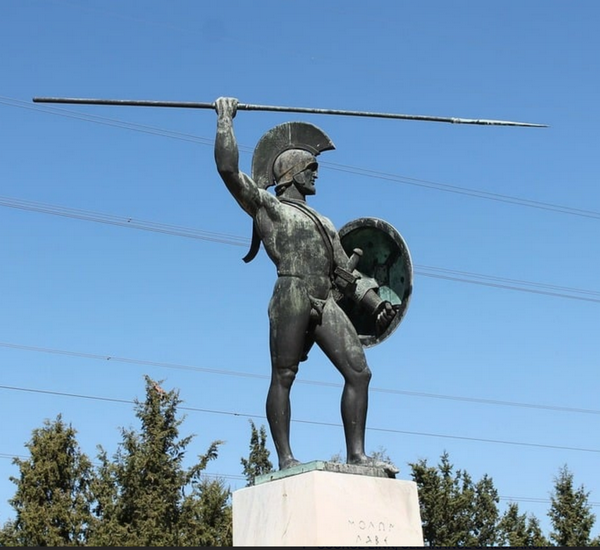
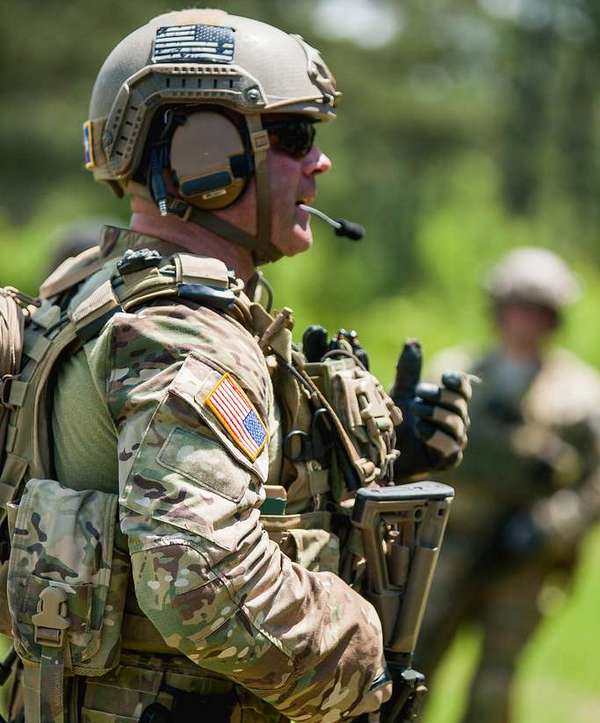
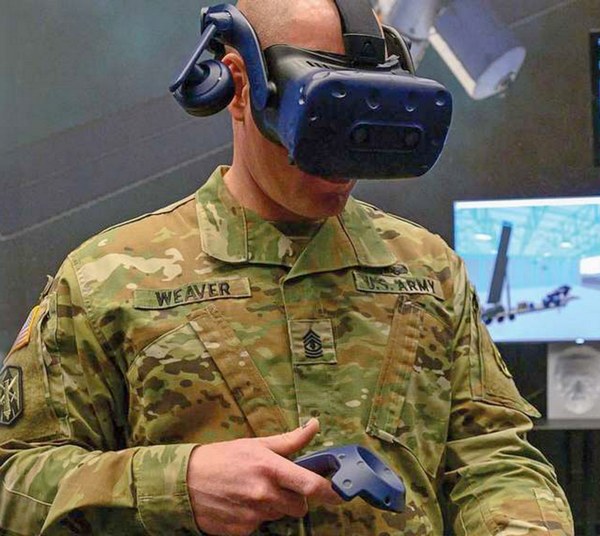

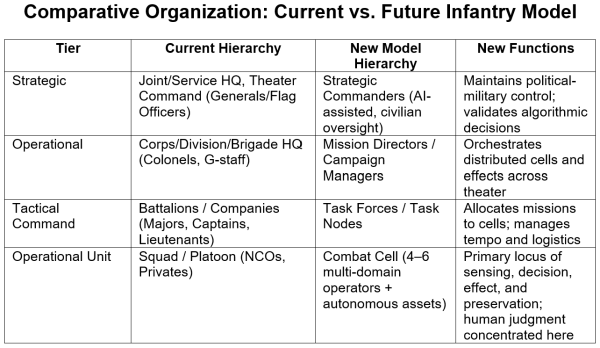
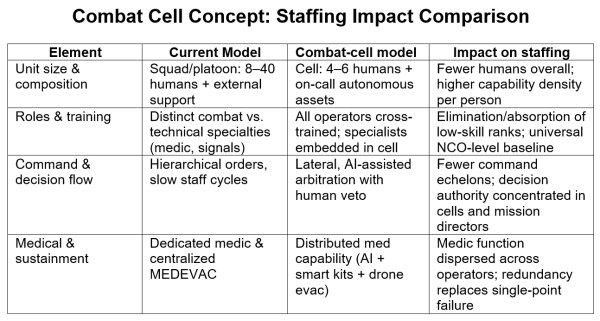


I feel that this excellent exposition is based on an unstated assumption: the zone of manoeuvre is above ground.
Hezbollah, Hamas, and earlier the Vietcong showed that by relocating fighting units underground one can largely cancel the advantages of massive surveillance with aircraft (drones, but also helicopters, airplanes, and airships), satellites, radars, and many other kinds of sensors.
Provided that the forces relying upon underground networks and bunkers have the proper surveillance gear, small teams can then decide where and when to surge from their hideouts to strike the enemy, or plant booby traps. Those actions are carried out by small teams — which is congruent with the analysis by Hovaness — but their members do not at all need to be those super-trained, STEM-proficient, analytical cyber-warriors laden with electronic gear.
As a reminder: Hamas showed some impressive videos of tracking Israeli soldiers remotely via hidden cameras and optical fibre connections, managed to resist two years and inflict severe losses on the Israeli army while fielding considerably less fighters — lightly equipped to boot. As for the much-vaunted Israeli AI-supported advanced equipment and battlefield intelligence, they essentially managed to kill civilians and destroy civilian infrastructure. Similarly, Israel managed to thwart the actions of Hezbollah by whacking its civilian and political membership, and by destroying civilian Lebanese infrastructure; Hezbollah’s troops, hidden underground in well-protected fortifications on the fighting line absorbed comparatively few losses.
The question is then whether such an approach requires more resources to set up the underground infrastructure than the one requiring the massive C3I/C6ISR/whatever+drones+AI, and where it can be put into use (in modern cities most probably, in the plains of Ukraine probably not). From that perspective, if ultimately victory can only be achieved by utterly destroying cities above and below ground without regard for the Geneva conventions, then the vision of those thoughtful elite soldiers taking judicious decision as to the next action by their swarms of AI-augmented drones risks to become a fiction.
An underground defending force can last until it is starved out, but it cannot operate offensively and take ground. Hamas defeated Israel in Gaza morally, but it did not introduce a new model of warfare. If you reverse the parties and imagine Israel defending itself in a nationwide tunnel network, you can understand the limitations of this approach.
I explicitly stated that such an approach is viable in cities but probably nowhere else.
And yes, it is a purely defensive approach. Just like in WWI (and earlier during the Russo-Japanese war), new defensive infrastructure and tactics came into play to thwart what was the favoured principle of movement warfare, which was assumed to be a requirement for and the guarantee of victory. Those defensive measures were very effective: whether on the Western front, the Italian front, or the Southern Balkan front, offensives were extremely costly for usually pitiful results. Militarily, what Hamas and Hezbollah did proved to be remarkably effective against the technologically bleeding-edge Israelis.
There is of course another aspect that will determine how dominant the new “landscape of war” will actually be: for it, one needs the capacity to produce the related equipment, most notably aerial and ground-based drones, on a superlatively massive scale — including all the related gear: electronics, CPUs, sensors, batteries, ordnance. I doubt that Europe has such industrial capacity; I doubt that the USA master all the necessary components.
> Elite status will depend less on physical or cognitive prowess and more on trustworthiness, interpretive judgment, and moral literacy—qualities that justify the continued presence of humans inside lethal decision loops.
“Moral literacy” – Ha!
> will not be the strongest or most ruthless
It’s already the case that warriors are not “the strongest.” But where is the evidence that ruthlessness (a willingness to pull the trigger, to say “yes” when morality says “no”) is not a benefit?
—-
Ultimately, as these systems become more powerful, large states will increasingly include the deployment of such systems as part of their nuclear response posture. The same will be true of other types of autonomous military hardware.
How exactly will what is moral be defined in the age of AI? I’m guessing in some capitalistic, profit maximization sort of way. The valuable assets of conquest that generate the profits will be protected, and the property rights secured. As for the people, it all depends on whether you meet the requirement of being a valuable asset of conquest. The vast majority won’t. And that adds up to a lot of costs that the profit maximizers will want to eliminate. The current defunding of food stamps is just a teaser for what’s coming once AI is built out.
Maybe, but I’ve been through these “revolution in military affairs” ideas in the past and learned to be a skeptic. I guess more of a “Everything in war is very simple, but the simplest thing is difficult” thing.
What would Debs say? Rich man’s war, poor man’s loss of infrastructure, livelihood, life, except through computer game skills that they might direct some of the carnage? Help me, I’m falling.
And by the way:
On The Eleventh Hour of the Eleventh Day of the Eleventh Month, nineteen eighteen, the armistice of the war to end all wars took effect. One hundred and seven years ago today.
The highest virtue would be to end all wars. Hypocrisy is the tribute vice pays to virtue. ƒ¨ç˚
What would Debs say? Perhaps in a nutshell: We (universally) must resist the wars that the powerful thrust upon us.
speculation
I disagree that decisions could be made remotely, they would have to be close to the front to minimize lag times and RF jamming. They would also have to do without satellite intel and comms, these would be the first things to be destroyed by the defender (I’m sure even the most lowly of countries could launch space junk into orbit).
Who is likely to have the skills mentioned and be pro-war, plus put up with and function in uncomfortable conditions and not want to earn loads of money in finance? Computer gamers seem the best option, but they would need training on a realistic battlefield simulations which are likely to be out of date, see the adaptions in the Russian SMO tactics.
Sorry missed your first paragraph, so you are saying that things can all be done in small cells.
But the point still remains, small cells without co-ordination is useless and this would be very difficult without reliable communication, which the enemy would be working hard to disrupt.
I note that that special forces group of 11 Ukrainian troopers all got wiped out in a very short order of time. All that training meant zip in the end as they were spotted, tracked and wiped out one after another. On the other hand I saw an ordinary Russian soldiers that managed to dodge several drones one after another and came out alive. So perhaps situational awareness and the ability to dodge is an important factor on the modern battlefield.
If you extrapolate drone size downward and quantity upward you end up with a rain of death on the battlefield that no human can survive. The combat cells would usually remotely deploy the machines that do the killing. Loss of real time communication would be offset by autonomous capabilities in drones and bots.
Thank you very much for this article. The potential of drone swarms fascinate me. I was first introduced to the idea in Ian McDonald’s 2010 SF book The Dervish House. Although not a military book, the handicapped character Can, a young boy, fancies himself a detective and uses robots to investigate a suicide bombing. A 2011 review of the book can be found online.
Wellie the whole problem with that is … black hawks flying nap of the earth were spotted before drop off. Even video from drones on roads for intel/ambush saw them, direction and numbers. Not hard to figure out where they were going and have a surprise party waiting for them. Still think they were sent in to whack some important people the West and Ukraine would not like Russia getting their hands on.
Focusing on what humans on the battlefield are there for, what their functions are and how we should conceive of their soldierly aretḗ — that is well-chosen.
When I am crossing a busy street and I spot a Waymo, I am a bit disconcerted to consider that the Waymo does not care. Ordinary drivers — even the psychopaths among them — mostly do not want the trouble that would ensue, should one run me over. Most drivers would have, I hope, an ethical aversion to inflicting injury even when they are impatient with me for delaying them. With a human driver, I can peer beyond the wind shield to ascertain if she has seen me — always reassuring, when that can be confirmed.
In conflict with other human beings, battle is negotiation by other means, a transaction with a currency of death and destruction being exchanged for territory and the power to compel the loser to do the will of the victor. The human is in the battle to surrender. To blink. To retreat. To flinch. To calculate irrecoverable loss. To be ethical, yes, and risk-averse. The human is in the battle to be vulnerable and “persuadable”.
Since Ukraine is the only example we have of such a war between (rough) peers, I think we ought to inquire into the factors that led to organizing the struggle along an extended line of contact, supplemented by attacks on strategic infrastructure, mostly refineries and electrical substations. What is the strategy chosen by each side to “persuade” the other, or more precisely to persuade strategic decision-makers?
The Heroic Age ended with the Bronze Age, I thought. Isn’t there a rather huge gap here between the end of the Bronze age in 1177 BC and the beginning of the Industrial warfare in the 19th or 20th centuries? I confess, I did a double take.
Familiarity with Carroll Quigley’s Weapons Systems and Political Stability causes me to shudder to think what this sort of weapons technology would mean in general for democracy and the well-being of working people in particular. Too much power in too few hands is a recipe for oligarchy and aristocracy.
https://www.goodreads.com/book/show/991684.Weapons_Systems_and_Political_Stability
What a great advert for digital platforms and ‘let me get an app for that’.
What could be better – developing a bunch of human GPUs to run alogos for a bunch of narrsisitic kleptocrates craving power who can’t be bothered with democracy/ ethics or any nations constitution.
The best way to end war is to never start one!
However, the evolutionary process by which monkeys made men of themselves was considerably slower than the reverse process.
. “War against a foreign country only happens when the moneyed classes think they are going to profit from it.” -George Orwell
“The new archetype, the analytical, self-aware professional, reflects an information society that prizes intelligence, adaptability, and judgment.” – find me enough analytical, self-aware professionals anywhere!! Tell me who qualifies whom to be said analytical, self-aware professionals?
“The circle of human agency will shrink, concentrating both power and accountability in an ever-tighter cadre.” – we have seen how that works out!!
” integrate intelligence, technology, and ethics into effective action.” ethics! whos ethics or what aim!
“The new archetype, the analytical, self-aware professional, reflects an information society that prizes intelligence, adaptability, and judgment.”
Nerds!
Seriously, though, nice writeup; however, as has been made abundantly clear in the Ukraine war and the Israel-Iran “war”, industrial depth, may play an even larger role. For example, in the latter, Israel essentially sued for a ceasefire without a ceasefire because of a lack of industrial-production depth in anti-missiles.
Secondly, today in Israel, we see war fighters committing genocide, focused on murdering women and children, celebrated in their sick society. Canon fodder will remain a good option for the slaughter of unarmed civilians. Presumably, it will continue as the West (which has not uttered a word of disgust, but continues to fund and support the genocide) tries to continue its 500-year colonial warfare against very weak foes by slaughtering their populations to continue to grab their resources. Drone diffusion, though, is narrowing potential (weak) targets.
Murderbot v. Zombie Apocalypse